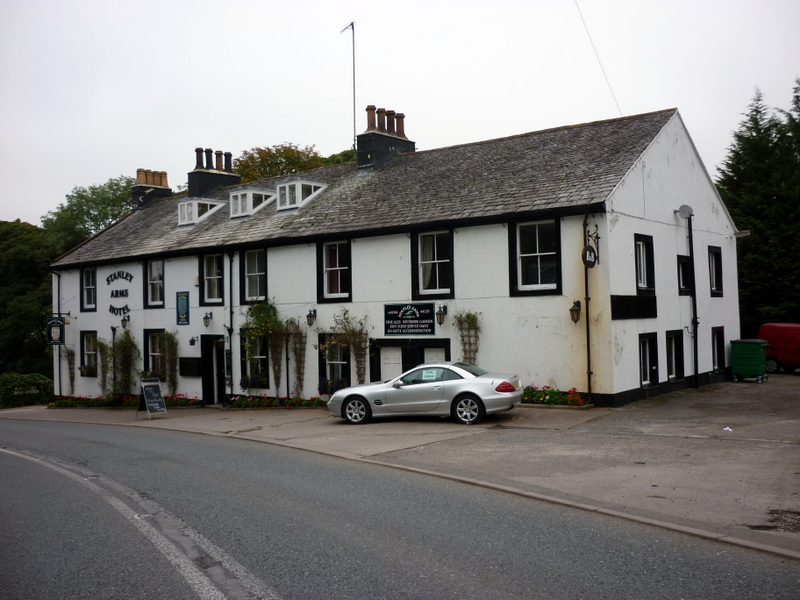Calder Bridge on:
[Wikipedia]
[Google]
[Amazon]
Calder Bridge (also Calderbridge) is a small village in
 The current
The current
Cumbria
Cumbria ( ) is a ceremonial and non-metropolitan county in North West England, bordering Scotland. The county and Cumbria County Council, its local government, came into existence in 1974 after the passage of the Local Government Act 1972. Cumb ...
in England. It is located between the hamlets of Gosforth
Gosforth is a suburb of the city and metropolitan borough of Newcastle upon Tyne, England. It constituted a separate Urban district (Great Britain and Ireland), urban district from 1895 until 1974 before officially merging with the city of New ...
and Beckermet
Beckermet is a village and civil parish in Cumbria, England, between Egremont and Seascale. The parish had a population of 1,619 in the 2011 census.
Historically in Cumberland, it is served by Braystones railway station and is less than a ...
and lies on the River Calder.
It is around 1 mile northeast from the Sellafield
Sellafield is a large multi-function nuclear site close to Seascale on the coast of Cumbria, England. As of August 2022, primary activities are nuclear waste processing and storage and nuclear decommissioning. Former activities included nucle ...
nuclear plant—Calder Hall Nuclear Power Station
Calder Hall Nuclear Power Station is a former Magnox nuclear power station at Sellafield in Cumbria in North West England. Calder Hall was the world's first full-scale commercial nuclear power station to enter operation, and was the sister plant t ...
was the world's first major nuclear power station when it opened in 1956. The village contains the Grade II listed St Bridget's Church, the Grade II listed Pelham House (formerly Ponsonby Hall) and the Stanley Arms inn.
Landmarks
 The current
The current St Bridget's Church, Calder Bridge
St Bridget's Church is on the north side of the A595 road in the village of Calder Bridge, near Beckermet, Cumbria, England. It is an active Anglican parish church in the deanery of Calder, the archdeaconry of West Cumberland, and the diocese o ...
was built in 1842. The church, listed as a Grade II listed building in 1989, is constructed in local red sandstone
Sandstone is a clastic sedimentary rock composed mainly of sand-sized (0.0625 to 2 mm) silicate grains. Sandstones comprise about 20–25% of all sedimentary rocks.
Most sandstone is composed of quartz or feldspar (both silicates) ...
ashlar
Ashlar () is finely dressed (cut, worked) stone, either an individual stone that has been worked until squared, or a structure built from such stones. Ashlar is the finest stone masonry unit, generally rectangular cuboid, mentioned by Vitruv ...
with a slate
Slate is a fine-grained, foliated, homogeneous metamorphic rock derived from an original shale-type sedimentary rock composed of clay or volcanic ash through low-grade regional metamorphism. It is the finest grained foliated metamorphic rock. ...
roof. The Pre-Raphaelite
The Pre-Raphaelite Brotherhood (later known as the Pre-Raphaelites) was a group of English painters, poets, and art critics, founded in 1848 by William Holman Hunt, John Everett Millais, Dante Gabriel Rossetti, William Michael Rossetti, James ...
stained glass, made by Powell's date to 1879 and were designed by H. E. Wooldridge and H. J. Burrow.
Calder Abbey
Calder Abbey in Cumbria was a Savigniac monastery founded in 1134 by Ranulph de Gernon, 2nd Earl of Chester, and moved to this site following a refoundation in 1142. It became Cistercian in 1148. It is near the village of Calderbridge.
Histo ...
, which lies by the River Calder just northeast of Calder Bridge, was founded by Ranulph de Meschiens in 1134 for Cistercians who moved from Furness Abbey
Furness Abbey, or St. Mary of Furness, is a former Catholic monastery located to the north of Barrow-in-Furness, Cumbria, England. The abbey dates back to 1123 and was once the second-wealthiest and most powerful Cistercian monastery in the cou ...
. It is a picturesque ruin adjoining Calder Abbey House, a largely 19th-century house which incorporates some remains of the abbey.
On the south side of Calder Bridge lies the Grade II listed Pelham House (named after Herbert Pelham
Rt Rev Herbert Sidney Pelham (25 June 1881 – 11 March 1944) was the third Bishop of Barrow-in-Furness from 1926 until his death in 1944.
Pelham was the third son of classical scholar Henry Francis Pelham and Laura Priscilla Buxton, daughter ...
, 3rd bishop of Barrow-in-Furness) but formerly known as Ponsonby Hall. It was built in 1774 and was designed by James Paine for Edward Stanley. This is currently used as offices for the Nuclear Decommissioning Authority (NDA), and before this was used as a School for Boys. There is woodland in the vicinity, known historically as the woods of Ponsonby.
The Stanley Arms is a 13-room inn in the village. The village was also home to the Golden Fleece inn.
See also
* Listed buildings in St. Bridget BeckermetReferences
{{reflist Hamlets in Cumbria Borough of Copeland